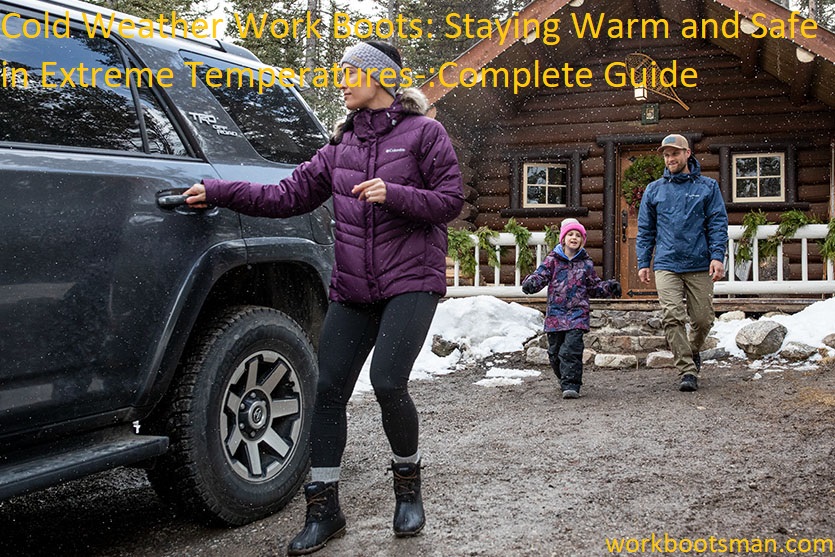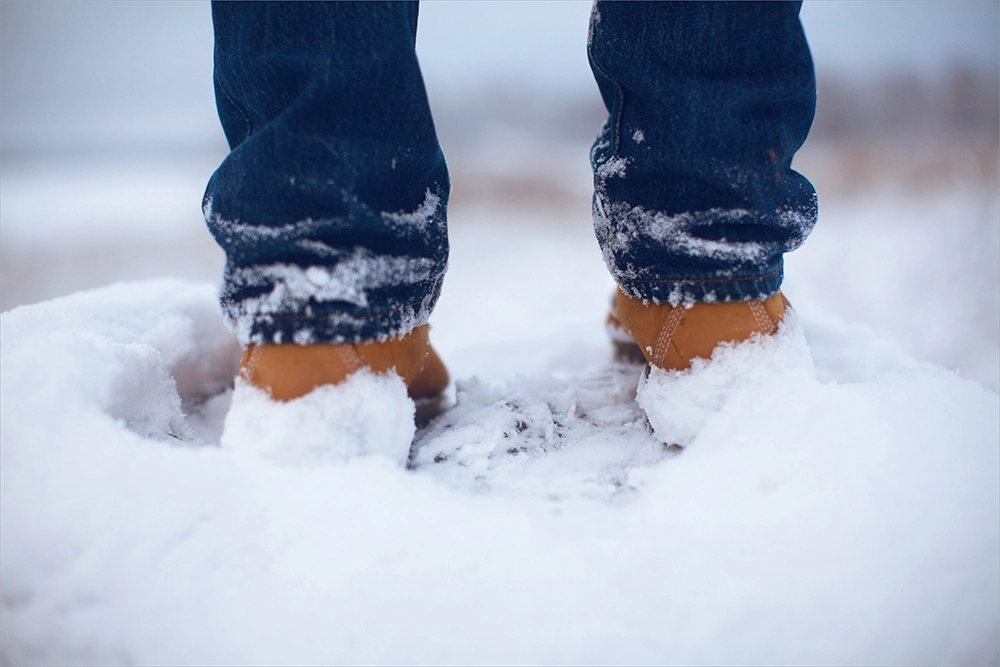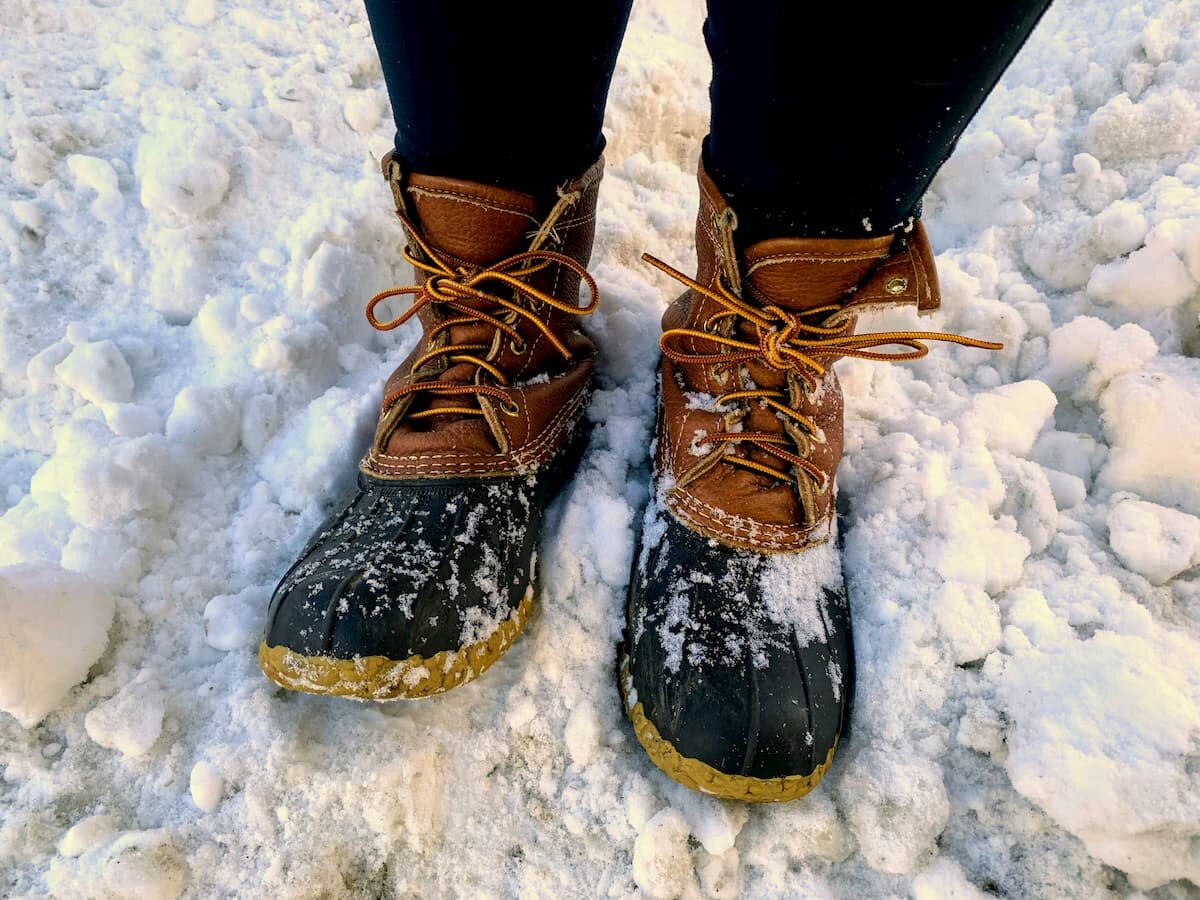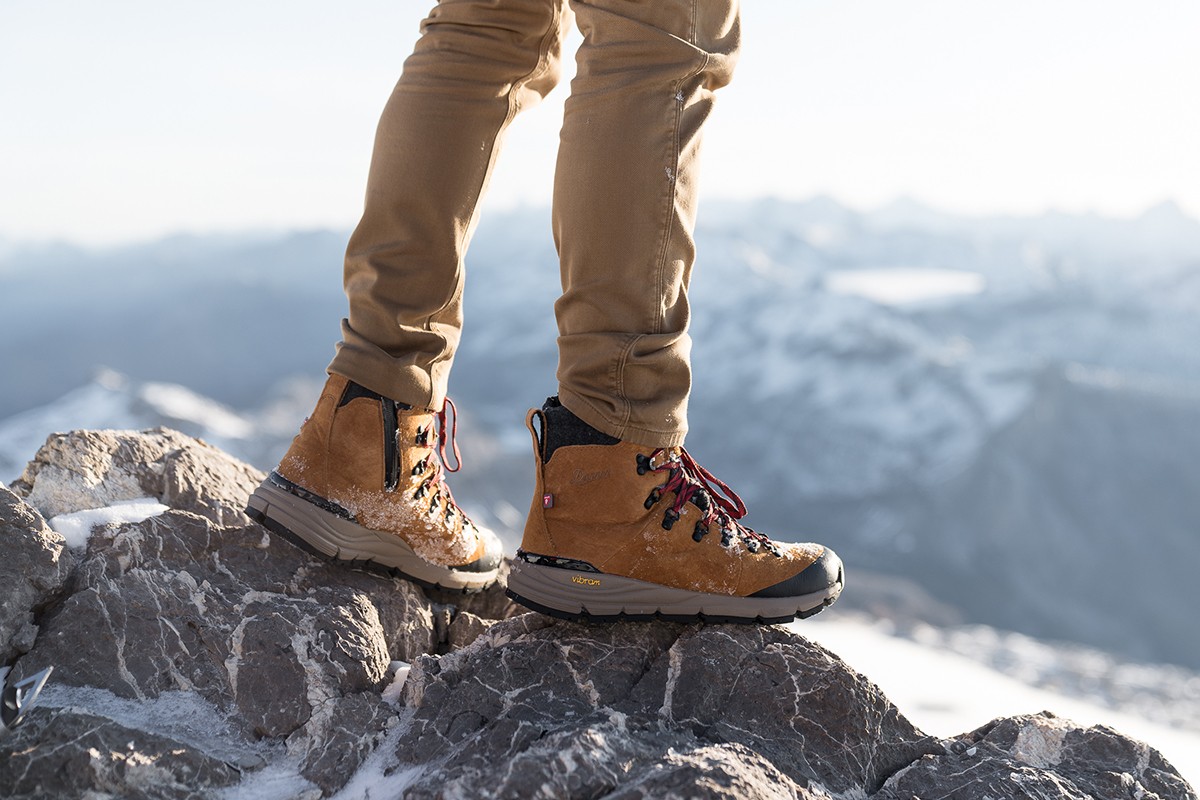It’s no secret that cold weather affects your body more than warm weather. But did you know it can make the workplace dangerous too?
Keeping your feet safe, warm, and comfortable in extreme temperatures requires special gear–cold weather work boots. In this guide, you’ll discover everything you need to know about investing in the right winter boots for any environment. Get ready to tackle the cold and stay safe!
The inevitable onset of winter’s chill brings both challenges and opportunities. To take advantage of the season, it’s important to ensure you are appropriately clothed and outfitted for the weather so that you can stay safe and warm while enjoying the outdoors. This guide focuses on tips, tricks, and best practices for selecting cold weather work boots that will keep your feet both toasty warm and protected in all kinds of extreme temperatures so you can tackle any cold-weather task with ease.
Read on to discover what features to look for when choosing cold weather work boots, how to make sure your boots fit properly, and how to keep your feet comfortable during extreme temperatures. In addition, this guide will answer some common questions about cold weather gear so that you can stay prepared during all of winter’s winds, snows, or frosts. So bundle up, don’t be afraid of the chill—with the help yours truly we’ll have your feet happily insulated in no time!

Explanation of the importance of staying warm and safe in cold weather work environments
Working in cold environments brings with it the risk of certain health and safety concerns. It is important to ensure workers understand the hazards and how to dress appropriately and stay safe while doing work outdoors in temperatures below 40°F (4°C). Proper clothing is essential for those who work in cold weather settings to help protect against hypothermia, frostbite, and other dangerous situations.
The best way for workers to stay warm and safe is by wearing high-performance, layered clothing designed for extreme temperatures. Base layers should be designed with breathable fabrics that wick away moisture from the body’s skin; mid-layers provide insulation in a lightweight package; outer layers should be windproof and waterproof.
In addition to staying warm with appropriate clothing, it’s just as important for workers outside in freezing temperatures to take into consideration protective gear such as winter boots, hard hats, gloves, face masks/shields, goggles/safety glasses, earplugs/headphones, knee pads or special cold-weather gear like heated vests or footwear inserts. All of these items are vital to ensure workers can stay warm and safe while performing their duties effectively.
Finally, employers should invest in education programs that focus on teaching proper work safety practices when working outside during inclement weather conditions such as cold temperatures below 40°F (4°C). Safety training that emphasizes the right outerwear posture, equipment choices, emergency care if necessary will greatly reduce potential risks associated with working outdoors when it’s cold outside.
Overview of the guide’s contents
This guide is designed to help you make the most of your cold-weather work boots. It covers everything from understanding how different materials protect against the elements, to selecting a work boot designed to keep your feet warm, dry and safe in extreme temperatures.
We’ll be looking at the features and benefits of different types of boots, as well as providing tips on how to choose the right ones for your work environment. We’ll also cover maintenance and storage practices that will ensure your cold-weather boots are always ready for action when you need them.
By the end of this guide, you’ll know exactly what to look for when choosing a winter work boot that meets your needs and keeps you comfortable in any weather.
Understanding Cold Weather Work Boots
Working in extreme temperatures can be a challenge, but the right cold weather work boots can make the task easier and even more fun! In this section, we will discuss what to look for in cold weather work boots, including materials, insulation types, waterproofing and other features. We will also provide some tips on how to find the right boot for your specific needs. We will end by examining some of the most popular brands and styles of cold weather work boots available today.
When searching for the perfect cold weather work boot, there are several factors to consider:
Materials – Quality materials make all the difference when it comes to comfort and durability. Leather is a popular choice since it’s exceptionally durable and provides great insulation against both cold and wet conditions without compromising breathability. Synthetic materials provide an additional layer of waterproofing that’s ideal for those who need extra protection from snow and ice. Rubber is also an excellent choice for those who must frequently traverse slick surfaces or thick mud puddles.
Insulation – It’s crucial to choose a boot with proper insulation from both water and air to keep your feet warm while wading in deeper waters. Breathable insulated boots are ideal if you prefer lighter weight boots that won’t compromise their insulation properties when wet. Thick insulating layers offer maximum protection against intense cold temperatures with minimal discomfort—perfect for long shifts outside during winter months or areas prone to extended periods of extreme temperatures.
Waterproofing – Waterproof outer shells are essential in keeping moisture out while providing breathable comfort inside your shoes as well as increased flexibility in more rugged terrain. Breathable waterproofing is especially important if you plan on spending large amounts of time outdoors in inclement weather conditions, such as during an intense snowstorm or downpour of freezing rain. Additionally, rubber-lined outsoles provide excellent grip on slippery surfaces like slick rock trails or wet street corners—essential when avoiding potential slips that could lead to serious injury or liability risks in professional settings like construction sites or military operations.
Key features to look for in cold weather work boots

When the temperatures start to drop, protecting your feet against cold and wet weather is essential for both comfort and safety. Cold weather work boots provide more warmth and insulation than regular boots, but investing in the right pair is key to staying warm and secure during long shifts. Here are some of the key features that are important to consider when shopping for cold weather work boots:
-Waterproofing: Look for a waterproof boot with a slip-resistant sole. The best ones should be highly breathable, with materials such as Gore-Tex or DrymaxX protection. If possible, go with a full-grain leather material as they tend to last longer and offer more insulation than synthetic materials.
-Insulation: Look for boots that come equipped with removable liner OR additional insulation that can be added inside if needed. It is also beneficial to consider insoles that are designed specifically for cold weather applications as these have extra cushioning which will provide better support during long periods of standing/walking in extreme temperatures.
-Height: Mid or high cut boots are optimal for decreasing chances of frostbite due to their height providing additional protection around the ankles and lower legs from snow or icy wind gusts in extreme climates.
-Fit: Make sure you have the correct size thanks to adjustable lacing systems or adjustable straps around the top of your boot that allow you make minor adjustments when needed throughout the day. A good fit will ensure better circulation meaning your feet stay warm even on colder days outdoors!
Materials used in cold weather work boots
When it comes to choosing the right work boots for cold weather, the materials used have a huge role in keeping you comfortable and safe. Working outdoors in harsh winter weather can easily put you at a higher risk of cold-related injuries, which is why it is important to select the right materials that not only keep you warm but also provide optimum durability and slip resistance.
The most popular materials used for cold weather boots are rubber, leather, and synthetic fabrics. Let’s take a look at each one:
Rubber: Rubber boots typically come with insulated liners that help keep your feet warm and dry in extreme temperatures. However, although these boots provide good traction and waterproofing capabilities, over time their insulation can wear down making them less effective against sub-zero temperatures.
Leather: Leather work boots are designed with heavy-duty insulation that prevents your feet from exposed to frigid temperatures. Additionally, their durable construction makes them suitable for wear and tear related to hard labor in extreme conditions.
Synthetic Fabrics: Synthetic fabric work boots boast superior breathability so your feet won’t become too sweaty even under multiple layers of clothing”. Synthetic fabrics are lightweight yet offer robust insulation even in extreme climates. Additionally, they are very affordable compared to leather or rubber counterparts.
Differences between insulated and non-insulated work boots
When selecting the right work boot for cold weather, one of the main things you will need to decide is whether you need insulation. This choice can be determined by your workplace environment and the severity of cold weather conditions. If you plan on working in extremely cold temperatures, non-insulated boots may not provide sufficient protection from the cold. Insulated boots, however, often come with extra layers designed to keep your feet warm even in extreme temperatures.
Non-insulated work boots are often better suited for milder cold weather and moderate temperatures. They typically have a water-resistant material throughout the boot, which helps keep feet dry while walking through wet or damp conditions. Non-insulated shoes also tend to be less bulky and lighter in weight than their insulated counterparts, making them more comfortable to wear in milder climates.
Insulated work boots contain layers of material between the inside and outside of the boot that acts as an insulating barrier against extreme weather conditions such as snow and ice. Insulation layers are often made from synthetic fibers or wool linings that help keep feet warm in frigid temperatures. Some insulated boots come with insulation rated all the way up to -75°F, ensuring that your feet stay warm even in extremely cold conditions. Many insulated shoes also boast additional benefits such as waterproofed leathers and moisture wicking lining materials for added protection from moisture during wet days on the job site.
Depending on where you will be wearing these boots and what type of climate extremes you face on a regular basis, choosing between non-insulated versus insulated work boots can make all the difference in staying comfortable and safe even when it’s freezing outside!
Maintaining Cold Weather Work Boots

To keep your work boots in prime condition, it is important to make sure they are properly maintained. It is also important to take precautions to prevent any damage that could be caused by cold weather conditions. Here are some tips for maintaining and caring for your cold weather work boots:
- Waterproof your boots regularly: Make sure you apply a waterproofing spray or treatment to your work boots before the cold weather season arrives. This will help them stay dry, especially when temperatures dip and the wet weather kicks in. You can find many water-resistant sprays on the market specially designed for leather or suede upper materials – make sure to select a formulation suitable for use on your particular boots.
- Clean gently: After periods of wear, it’s essential to clean your work boots regularly – dirt build-up can lead to damage over time. Choose mild detergents specifically made for leather or suede uppers, and gently scrub off any dirt or grime without damaging the material itself. It is also important to make sure any moisture has completely dried out before you put your boots away; quick-drying toweling inserts can help with this process.
- Refresh insoles: Insoles play a huge role in keeping feet warm during cold weather; as daily wear begins to degrade their structure, though, their thermal properties may decrease over time as well! An easy way to combat this is by replacing old insoles with fresh ones every few months – this will ensure comfort and warmth will remain at optimal levels throughout the season (bonus: it’ll also keep bad smells at bay!)
- Add extra protection: Although most winter footwear comes with some kind of waterproofing already applied from the factory, adding an additional protective layer like rubber overshoes can provide valuable extra insulation when trudging through wet snow or slushy ice – just make sure they fit properly over the top of workboots!
Proper care and maintenance of cold weather work boots
In extreme temperatures when temperatures drop down below freezing, proper care and maintenance of work boots is essential to maintaining safety and comfort on the job. This guide will provide information on how to choose the right winter-ready boots and care for them to ensure their durability through cold weather conditions.
When shopping for cold weather work boots, it is important to consider features such as insulation, waterproofing, fit, traction, and sole construction. Look for options that are both insulated and waterproof so you can stay protected from wet or icy elements. Additionally, consider materials like leather or synthetic uppers with reinforced stitching for superior durability. Be sure the boot offers a snug fit without being constricting—the harder worked your feet become in uncomfortable shoes that do not fit properly, the more quickly they will tire out! Consider lacing systems as well — velcro closures typically provide a more comprehensive fit compared to traditional lace-up alternatives while drawstrings give you quick access in and out of your footwear without excessive tying and untying. Pay attention to design features like dual-density foam insulation or other innovative technologies like memory foam midsole cushioning layers; these additional elements will help make your work environment more comfortable by providing increased support where you need it most.
After selecting the right pair of winter work boots for your needs, proper care routines are essential for keeping them in top shape through multiple seasons of wear in harsh climates. Inspect your boots regularly; make sure that all seams remain tightly secure with no frayed fabric or worn stitches in sight! Keep an eye out for heel-piece covers – these features offer excellent abrasion protection against cold surface contact, but if they are too thin or worn out they will reduce their effectiveness significantly. Cleaning should be done once per week with mild soap and water before proactively treating with a waterproof agent (especially beneficial during wet months). Apply polish over time to replenish any of the lost oils from normal everyday wear — this will help keep leather looking vibrant while also protecting its original quality against surface scratches or abrasions during use. Finally — letting your boots air dry away from direct heat sources like radiators is key to preserving their structural integrity; avoid drying your boots too close otherwise you run the risk of damaging sensitive components!
Tips for extending the lifespan of your boots
To ensure your cold weather work boots stay in optimal condition, use the following tips:
– Make sure to dry your boots thoroughly after each use. Remove the insoles and use a damp cloth to remove any salt or debris that may have built up on the exterior of your boots. Allow them to air dry completely before storing away.
– Spray and apply a water-repellent product to help keep moisture off the surface of your boots and protect them from acid rain, ice buildup, and dirt.
– Store your boots in a cool, dry place as warm conditions can cause stress on materials such as leathers or synthetics – potentially crack it or degrade it over time.
– Use cedar shoe trees for added odor control and shape retention. The wood absorbs sweat and helps maintain boot shape when not in use while also helping absorb any foul odors attached to them.
– Regularly repair scuffs along with tears that become visible on the exterior of your cold weather work boots so they don’t get worse over time.
– Have them inspected by a professional cobbler at least once a year for signs of wear such as tears or worn soles that you may not notice!
Common issues with cold weather work boots and how to address them

Extreme temperatures can put a lot of pressure on your feet and expose them to health risks like frostbite. Many outdoor laborers and cold weather sports enthusiasts rely on specialty cold weather boots to keep their feet warm, comfortable and safe. However, there are some common issues with cold weather work boots that should be addressed in order to get the most out of them.
One issue is that the insulation inside the boot can weaken over time, resulting in a decrease in warmth, comfort and protection from wet conditions. To address this issue, it’s important to replace your cold-weather boots as soon as you start feeling uncomfortable or notice a decrease in warmth. Also make sure you choose a boot with proper insulation for extreme temperatures that is made out of synthetic materials instead of natural ones like leather or wool.
Another potential issue is lack of breathability, which can lead to excessive sweating and cause your feet to become wet and susceptible to more rapid cooling due to evaporation. Avoiding heavy socks with dense pile lining when selecting your winter boots can help reduce sweat buildup. Look for breathable uppers such as Gore-Tex lined footwear that will ensure lasting comfort during intense activity in colder climates.
Finally, the soles can crack or wear away if they see prolonged or heavy usage in extreme conditions. Look for replacement soles or waterproof coatings applied at regular intervals so you can walk safely on slippery surfaces without damaging your footwear or feeling discomfort from ice buildup inside the sole compartments of your shoes . A good rule of thumb is to replace worn out insulated sole liners every six months if you frequently work outdoors on snow and ice-covered surfaces.
Conclusion
Cold temperatures can create hazardous work environments, particularly when you’re working outside. Extreme cold weather boots might be your best bet when it comes to keeping your feet safe and warm in these conditions. They should be comfortable, waterproof, and insulated enough to protect your feet from the cold. Make sure to select a pair that provides ample arch support and keep an eye out for features like superior grip and deep treads that can help keep you safe on slippery surfaces. Above all, choose a pair of cold weather work boots that provide you with the warmth and protection needed without sacrificing comfort or durability.
FAQs
Which winter boots are the warmest?
There are many winter boots that are warm, but some of the warmest options are Sorel Caribou, Columbia Bugaboot Plus IV Omni-Heat, Kamik NationPlus, Baffin Impact, and The North Face Chilkat 400.
What boots keep your feet warmest?
Boots with insulation, waterproofing, and a good sole for traction are best for keeping your feet warm in the winter. Look for options with features like Thinsulate, Gore-Tex, and Vibram soles for maximum warmth and comfort.
How do you stay warm in extreme cold?
To stay warm in extreme cold, it’s important to dress in layers and cover exposed skin. Wear a base layer made of moisture-wicking material, followed by an insulating layer and a windproof outer layer. Additionally, wear a warm hat, gloves, and insulated boots.
What is the warmest boot in the world?
The warmest boot in the world is debatable, but the Baffin Impact, the Vans Hi-Standard Linerless DX, and the Kamik NationPlus are among the warmest options available.
What are warm boots called?
Boots that are designed to keep your feet warm in cold weather are commonly referred to as winter boots, snow boots, or cold weather boots.
What shoes to wear in very cold weather?
In very cold weather, it’s best to wear shoes that are warm, waterproof, and slip-resistant. Look for boots that have insulation, such as Thinsulate, and features like Gore-Tex and Vibram soles.
What material is best for winter boots?
The best materials for winter boots are those that are waterproof, insulating, and breathable. Some of the most popular materials for winter boots include leather, synthetic materials, and Gore-Tex.
How to buy warm winter boots?
When buying warm winter boots, consider features like insulation, waterproofing, and sole quality. It’s also important to make sure that the boots fit well and are comfortable to wear for extended periods of time.
What does the military use for cold weather boots?
The military uses a variety of cold weather boots, including the Mickey Mouse Boot, the Extreme Cold Vapor Barrier Boot, and the Belleville 795V Insulated Waterproof Boot.
What are temperature rated boots?
Temperature rated boots are boots that are designed to provide a certain level of warmth in specific temperature ranges. They are rated based on the amount of insulation and other features that are designed to keep your feet warm.
See Also:
- Best insoles for work boots on concrete 2023
- Best work boots for landscaping 2023
- Best work boots for mud 2023
- Best zipper work boots 2023
- Best irish setter work boots 2023

